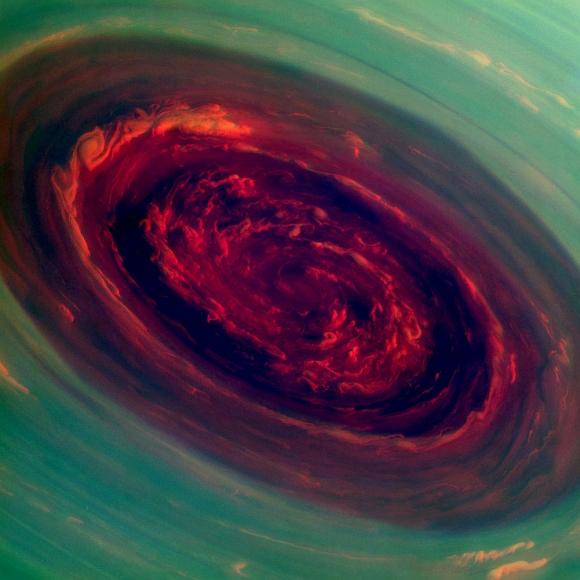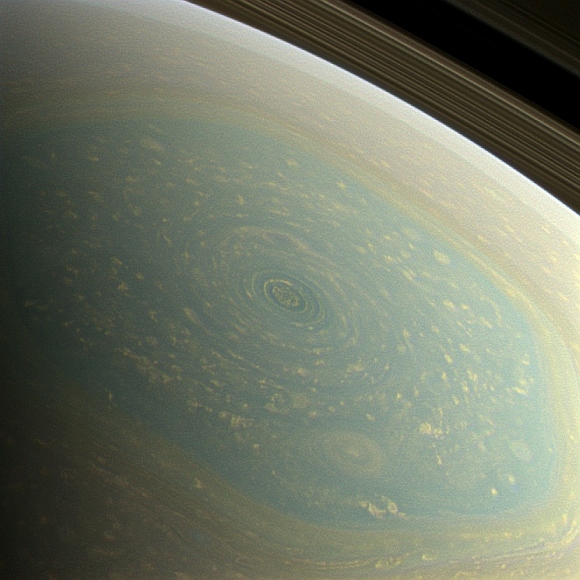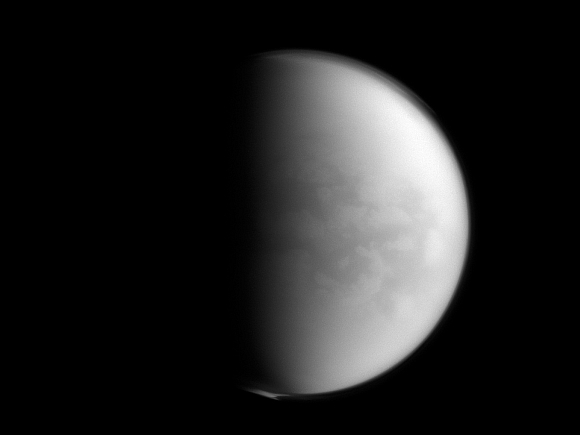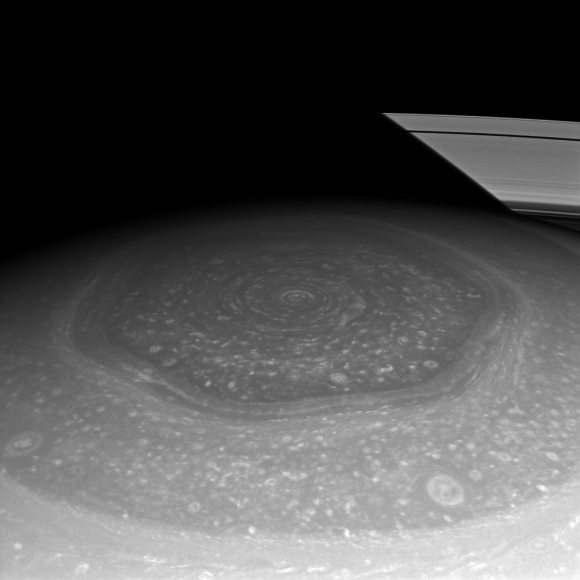 | « Back to article | Print this article |
PICS: NASA probe captures MONSTER hurricane on Saturn
The National Aeronautics and Space Administration 's Cassini spacecraft has provided scientists the first close-up, visible-light views of a behemoth hurricane swirling around Saturn's north pole.
In high-resolution pictures and video, scientists see the hurricane's eye is about 2,000 kilometres wide, 20 times larger than the average hurricane eye on earth.
Click NEXT to see more pictures...
PICS: NASA probe captures MONSTER hurricane on Saturn
Thin, bright clouds at the outer edge of the hurricane are travelling 150 meters per second. The hurricane swirls inside a large, mysterious, six-sided weather pattern known as the hexagon.
"We did a double take when we saw this vortex because it looks so much like a hurricane on earth," said Andrew Ingersoll, a Cassini imaging team member at the California Institute of Technology in Pasadena.
Click NEXT to see more pictures...
PICS: NASA probe captures MONSTER hurricane on Saturn
"But there it is at Saturn, on a much larger scale, and it is somehow getting by on the small amounts of water vapour in Saturn's hydrogen atmosphere," said Ingersoll.
Scientists will be studying the hurricane to gain insight into hurricanes on earth, which feed off warm ocean water. Although there is no body of water close to these clouds high in Saturn's atmosphere, learning how these Saturnian storms use water vapour could tell scientists more about how terrestrial hurricanes are generated and sustained.
Click NEXT to see more pictures...
PICS: NASA probe captures MONSTER hurricane on Saturn
Both a terrestrial hurricane and Saturn's north polar vortex have a central eye with no clouds or very low clouds. Other similar features include high clouds forming an eye wall, other high clouds spiralling around the eye, and a counter-clockwise spin in the northern hemisphere.
A major difference between the hurricanes is that the one on Saturn is much bigger than its counterparts on earth and spins surprisingly fast. At Saturn, the wind in the eye wall blows more than four times faster than hurricane force winds on earth.
Click NEXT to see more pictures...
PICS: NASA probe captures MONSTER hurricane on Saturn
Unlike terrestrial hurricanes, which tend to move, the Saturnian hurricane is locked onto the planet's north pole. On earth, hurricanes tend to drift northward because of the forces acting on the fast swirls of wind as the planet rotates. The one on Saturn does not drift and is already as far north as it can be.
"The polar hurricane has nowhere else to go, and that's likely why it's stuck at the pole," said Kunio Sayanagi, a Cassini imaging team associate at Hampton University.
TOP photo features of the week
Click on MORE to see another set of PHOTO features...





